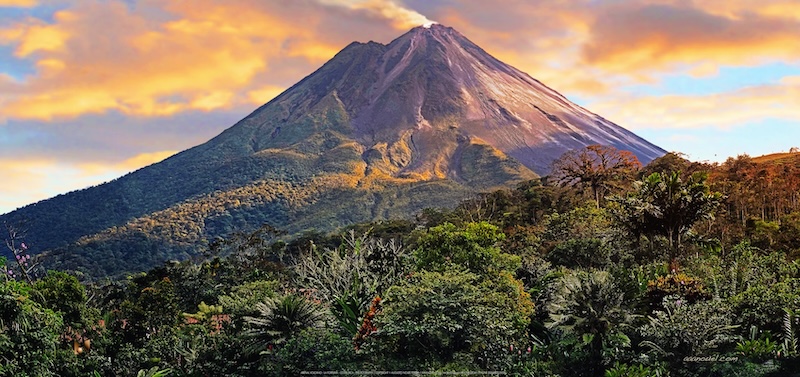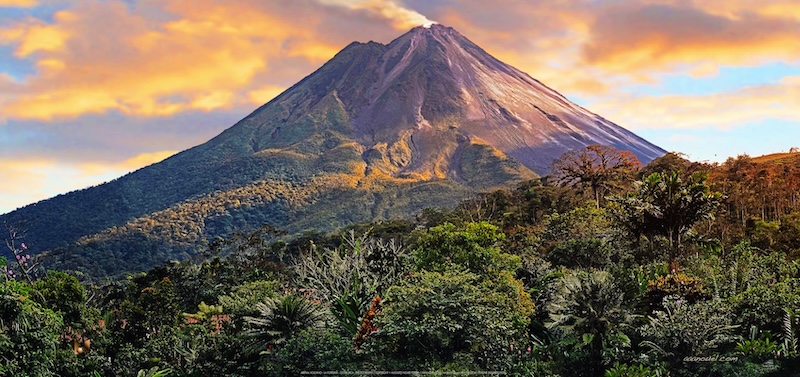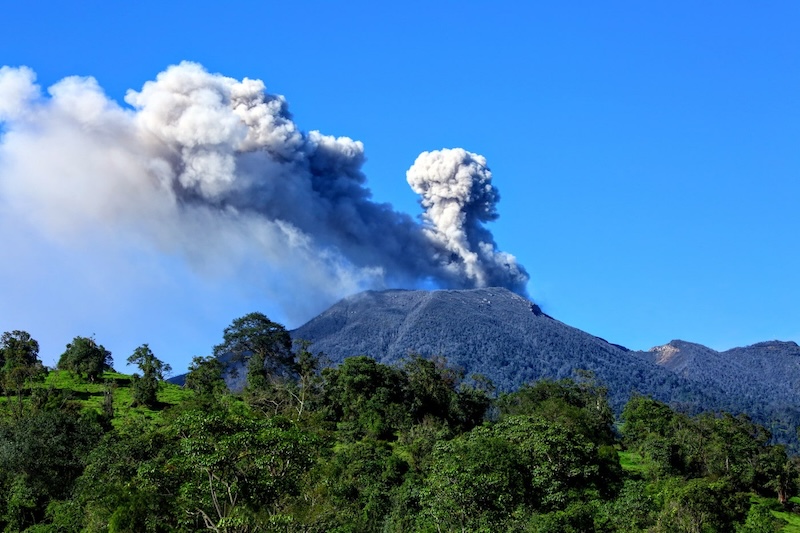Volcanoes of Costa Rica: A Basic Guide
Jump to a section:
- Introduction
- Volcanic Mountain Ranges in Costa Rica
- Arenal Volcano
- Poás Volcano
- Irazú Volcano
- Turrialba Volcano
- Barva Volcano
- Miravalles Volcano
- Orosí Volcano
- Why Visit the Volcanoes of Costa Rica?
- Travel Tips for Volcano Visitors
- Conclusion
Introduction
Costa Rica, a small but geologically rich country, is home to over 60 volcanoes. These majestic formations have not only shaped the country's breathtaking landscapes but also contributed to its biodiversity, energy production, and booming eco-tourism industry. In this guide, we’ll explore the major volcanic mountain ranges and seven of the country’s most iconic volcanoes, from steaming craters to ancient sleeping giants.
Volcanic Mountain Ranges in Costa Rica
Costa Rica’s volcanoes are primarily concentrated in three volcanic mountain ranges:
- Guanacaste Range: Includes Miravalles and Orosí volcanoes.
- Central Volcanic Range: Home to Poás, Barva, Irazú, and Turrialba volcanoes.
- Talamanca Range: Not volcanic but useful for geographical contrast.
These volcanoes exist due to the subduction of the Cocos Plate beneath the Caribbean Plate, creating a dynamic and ever-changing geological environment.
Arenal Volcano – Costa Rica’s Most Famous Peak

Located in Alajuela near La Fortuna, Arenal Volcano rises to 1,670 meters and is famous for its near-perfect cone shape. From 1968 to 2010, it was Costa Rica’s most active volcano, attracting thousands of tourists eager to see glowing lava flows. Now dormant, Arenal is surrounded by rainforest, geothermal hot springs, and the expansive Arenal Volcano National Park. Visitors can hike cooled lava fields, soak in natural springs, or enjoy views of Lake Arenal.
Poás Volcano – A Dynamic Giant Currently at Rest
Poás Volcano, in Alajuela Province, features one of the world’s largest geyser-type craters. Known for its acidic lake and frequent phreatic eruptions, it has been a centerpiece of Costa Rica’s volcanic activity.
Important Note (2025): As of April 2025, the Poás Volcano National Park is closed indefinitely due to increased volcanic activity. The Costa Rican National Emergency Commission (CNE) has issued a Red Alert. All access is suspended. Visitors are advised to monitor official updates before planning travel.
Irazú Volcano – The Highest Active Volcano in Costa Rica
At 3,432 meters, Irazú is the tallest active volcano in Costa Rica. Located near Cartago, it last erupted in the 1960s, covering the Central Valley in ash during U.S. President John F. Kennedy’s visit. On clear days, you can see both the Pacific and Atlantic Oceans from its summit. The surrounding national park features sparse vegetation adapted to acidic soil and ash.
Turrialba Volcano – Irazú’s Fiery Twin
Sharing a base with Irazú, Turrialba stands at 3,340 meters. It has seen increased activity since 2007 and is known for gas emissions and a high risk of phreatic eruptions. Access requires a hike or 4WD, and the national park features wet and humid mountain forests with oak and encino trees. The area is monitored due to potential eruption risks.
Barva Volcano – A Sleeping Giant in the Cloud Forest
Located in Braulio Carrillo National Park, Barva Volcano reaches 2,906 meters. It has three crater lagoons: Barva, Danta, and Copey. Its rainforest ecosystem includes over 100 plant species, 80 bird species, and 20 mammals. Though its last eruption was over 6,000 years ago, it is still monitored. Hikers can explore several well-maintained trails, including scenic overlooks and lagoon viewpoints.
Miravalles Volcano – Geothermal Wonder of Guanacaste
Standing at 2,028 meters, Miravalles is the highest point in the Guanacaste Range. Though inactive, it features fumaroles, hot springs, and mud pools. It is also home to one of Costa Rica’s most significant geothermal energy projects. The surrounding area offers scenic rainforest views, biodiversity, and river systems used for hydroelectric and irrigation purposes.
Orosí Volcano – The Ancient Sentinel of the North
Located near the Nicaraguan border, Orosí Volcano stands at 1,440 meters and is part of the Guanacaste National Park. Dormant since prehistoric times, it shows no secondary activity. It’s part of the larger Orosí-Cacao volcanic group. The region is rich in dry tropical forest biodiversity and supports ongoing scientific research.
Why Visit the Volcanoes of Costa Rica?
- Biodiversity: Volcanoes support unique ecosystems teeming with flora and fauna.
- Adventure Tourism: Hot springs, hiking, rafting, wildlife photography, and more.
- Scenic Beauty: Panoramic views, crater lakes, and cloud forest trails.
- Accessibility: Many volcanoes are within a few hours’ drive from major cities.
Travel Tips for Volcano Visitors
- Visit in the dry season (Dec–Apr) for clear skies.
- Pack smart: Hiking shoes, camera, binoculars, rain gear, and layers for cold altitudes.
- Stay safe: Obey park regulations, especially around active volcanoes.
- Use certified guides and tour operators for the best experience.
Conclusion
From active giants like Turrialba and Irazú to the quiet, lagoon-filled trails of Barva, Costa Rica’s volcanoes offer something for every traveler. Whether you’re here to hike, relax in a hot spring, or study biodiversity, these mountains of fire will leave a lasting impression.
Stay informed, travel responsibly, and let the power and beauty of Costa Rica’s volcanoes inspire your next great adventure.








